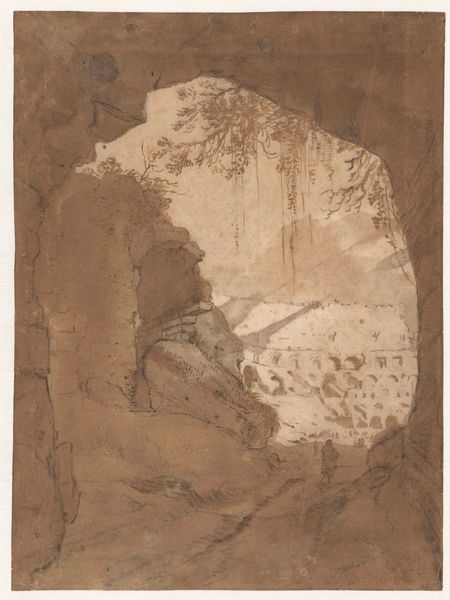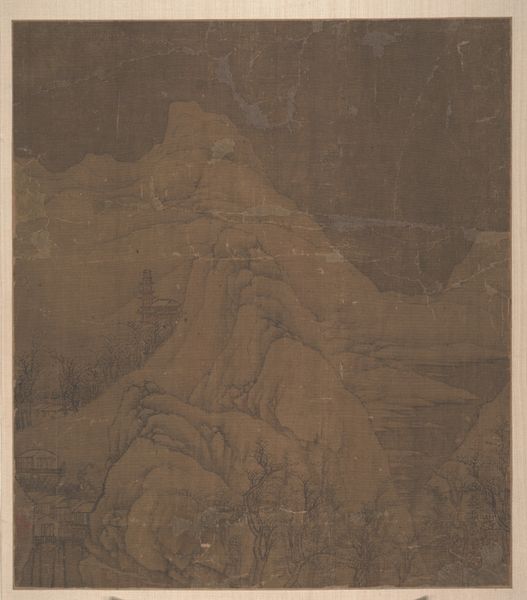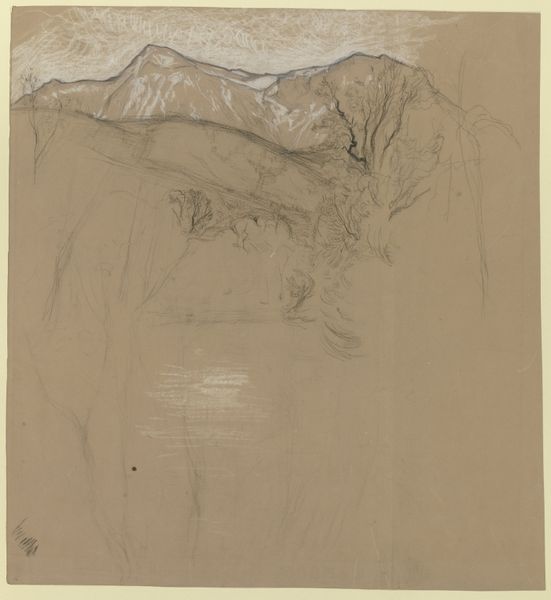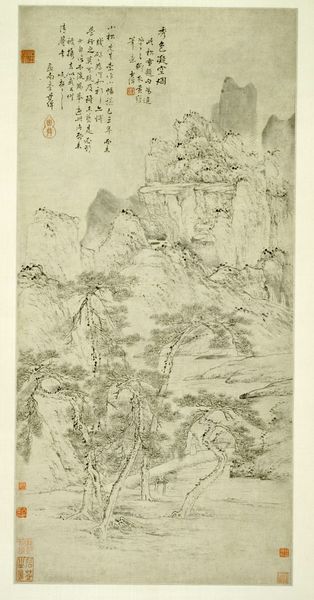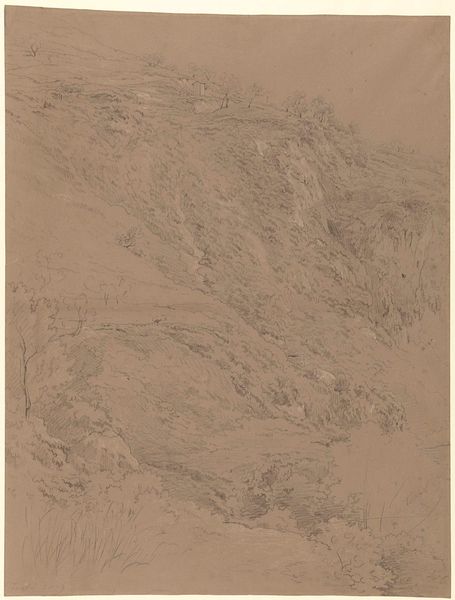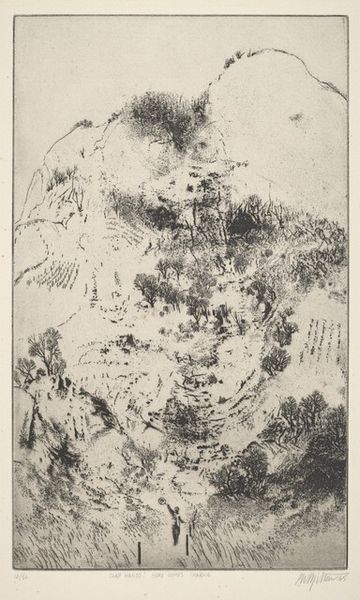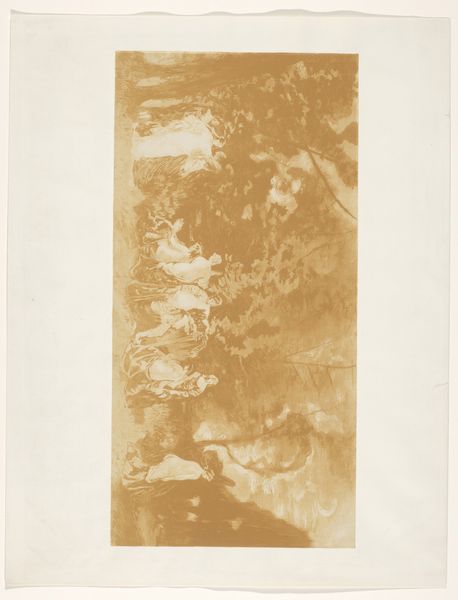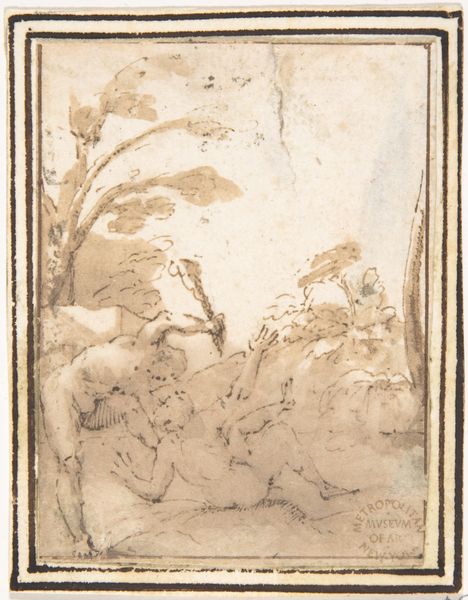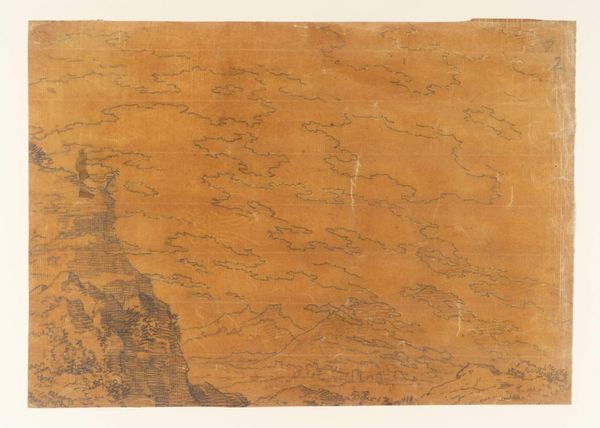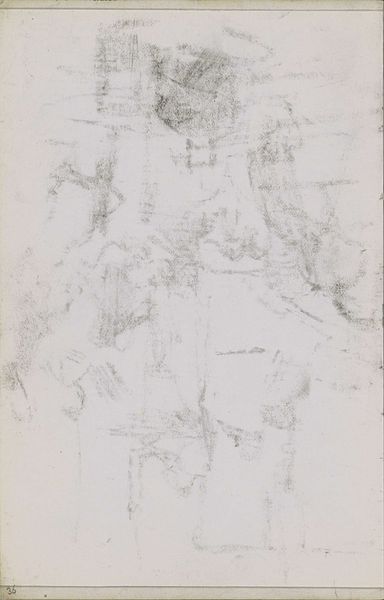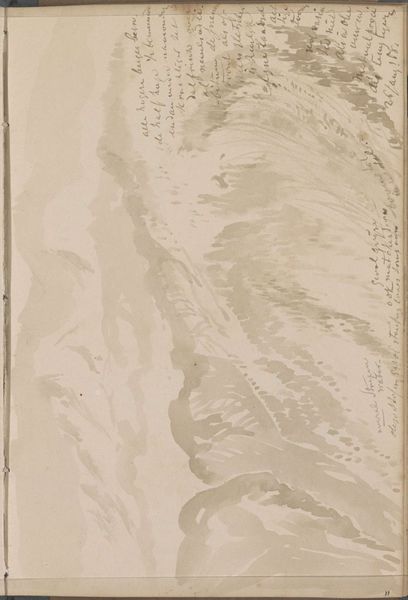
drawing, paper, ink
#
drawing
#
baroque
#
landscape
#
charcoal drawing
#
paper
#
ink
#
genre-painting
Dimensions: height 427 mm, width 385 mm
Copyright: Rijks Museum: Open Domain
Curator: Looking at this drawing by Cornelis van Poelenburch, entitled "Interieur van een ruïne met figuren," made sometime between 1596 and 1667, displayed here at the Rijksmuseum... What springs to mind? Editor: Hmm, immediately I feel a sense of melancholy. The ruined interior suggests a glorious past, now decayed. The sepia tones deepen that nostalgic, slightly mournful mood. Curator: Precisely. The drawing, rendered in ink and charcoal on paper, masterfully uses chiaroscuro to amplify this effect. See how the dramatic light and shadow emphasize the contrast between what was and what is. Editor: I'm drawn to the composition—it's cleverly constructed. The ruin almost seems to frame the lone figure in the foreground. Curator: A tiny figure dwarfed by the enormity of time and decay! It's genre painting, but through Poelenburch's landscape style he makes a silent observation on the human condition. Editor: Are there figures on the top? It seems some tiny, maybe stone people, watching over the standing one? What would you make of their symbolism in this work? Curator: I think these added characters on top could be mythical creatures, maybe Roman Gods turned to stone watching the people pass by as ruins consume what they once stood for. Editor: Right, it reminds me that nature reclaims everything eventually. Curator: Absolutely, a potent symbol. The ruined interior reminds us of mortality and that constant negotiation of what lasts and what fades. The figure's contemplative pose underscores the universality of this understanding. Editor: Well, now I am leaving this artwork more melancholic than when I arrived. It leaves one to wonder, what will survive? Curator: A worthwhile question indeed. The image’s haunting beauty certainly lingers, provoking introspection long after you leave.
Comments
No comments
Be the first to comment and join the conversation on the ultimate creative platform.
